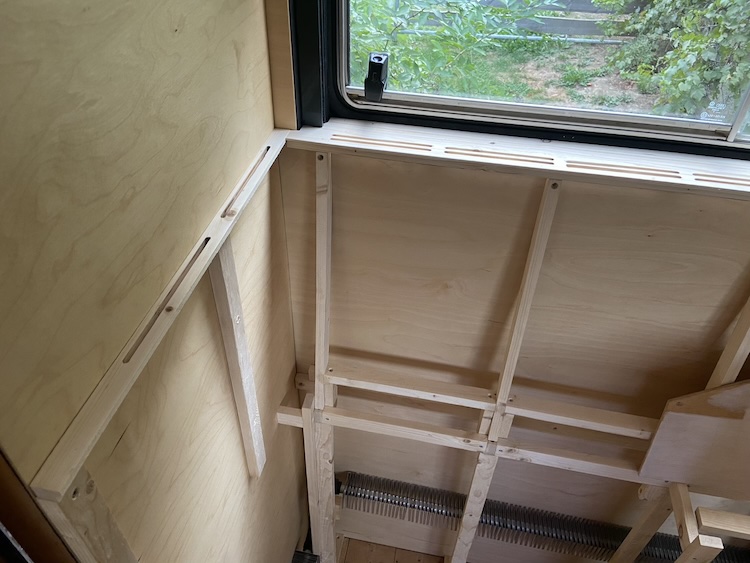After laying the heating pipes and installing the radiators, I further refined the heating system by building ventilation shafts to facilitate airflow within the cabin. Cold air from the floor would be drawn into the shafts and warmed by the radiators. By narrowing the ventilation shafts upwards, the chimney effect would be improved, resulting in an additional acceleration of the warm, rising air.

Building the foundational structure
The shafts would be seamlessly integrated into the seating area, so I started with the construction of a robust foundational structure using spruce slats.

After oiling and preparing all the parts, I proceeded to mount them within the cabin.

Crafting the window sills
I precisely fitted matching window sills from spruce slats that would sit on top of the fundamental structure.

I used my router to mill slots into the window sill, allowing the warm air to flow effectively through it and rise as close to the window as possible.

I was satisfied with the initial prototype, so I proceeded in a similar fashion with the remaining window sills.

Once finished sanding and oiling, I mounted the window sills in their designated positions under the windows.

On the rear wall, where there were no windows, I attached slightly narrower strips.

Covering the shafts
Subsequently, I constructed and installed the backrests, which served as a cover for the inclined part of the ventilation shaft.

For the lower, straight sections, I built a small sliding door into the covers.

Through the small maintenance sliding door, access to the ventilation valve for the radiators positioned at the highest point in the rear section was available.

When the door was closed, the warm air would flow nicely upward through the openings.

The system was ready for its first practical test! Using the flame of a lighter, it was easy to observe how the warm air flowed upward from the slots in the window sills.
Building ventilation shafts around the water tank
Previously, in my van during winter, I would occasionally observe condensation forming in poorly ventilated areas on the wall of the water tank. To prevent this, I built additional ventilation shafts around the tank.

The warm air rising from these shafts would then function as heating for the area above the tank and beneath the table.